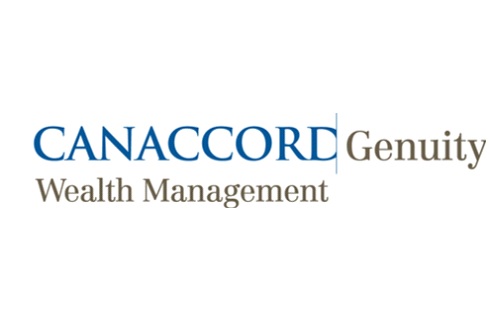This month:
Global growth set against burgeoning geopolitical risks
Big moves seen across most equity markets.
Positive signs for strengthening global economy.
Reduction of central bank balance sheets and liquidity raise concerns.
Growing geopolitical risk tempers optimism.
Featuring this month’s experts:
Investors have good reason to be optimistic about 2018’s prospects, but this should be tempered with an awareness of several threats to portfolios.
Here, leading wealth managers from our panel explain the key risks – and opportunities – investors should be thinking about as the year gets underway, along with giving their thoughts on Bitcoin, the UK housing market and the merits of active management.
Early thoughts on 2018
Insights from:

Tom Becket, Chief Investment Officer at Psigma Investment Management, says:
It’s hard to deny that the past two years were great for most investors. As we now enter a new year, here are our thoughts on the economic themes for 2018 and how we will shape client portfolios in response.
We’ve seen already big moves across nearly all global equity markets – namely the technology sector in the US and markets like Japan in Asia. Our views for 2018 are more cautious as we don’t expect the gains of last year to be repeated, but at the start of this year it’s been a case of ‘more of the same’: markets doing well and investors getting very excited about the year ahead.
![]()
Equity markets are currently doing their own thing, but we believe certain equity markets and sectors are not yet factoring in the pressures they may face later in the year from interest rates in the US and a cessation of quantitative easing in Europe and the UK.
One particular risk is the potential return of inflation. There appear to be some real supply bottlenecks in parts of the global economy building up at the same time that wages are starting to go up and, interestingly, commodity prices have also moved higher over the last few months. All of these are pointing towards a higher inflation rate for the global economy in 2018 and this is not being factored into bond markets, and could well set the tone as we move through 2018.
Equity markets are currently doing their own thing, but we believe certain equity markets and sectors are not yet factoring in the pressures they may face later in the year from interest rates in the US and a cessation of quantitative easing in Europe and the UK. This may also disrupt the ‘happy equilibrium’ that we’ve seen over the last few years of bond yields being steady or falling and equity markets going up, meaning our portfolios might start to become more cautiously positioned as we move through the year.
In summary, we think positive returns can be made, but it’s about thinking outside the box and being sure that you’re positioned appropriately. We’ve gone from a risk-on position at the start of 2016, to a progressively more ‘neutral with a hint of caution’ position in 2017, to a potentially outright cautious later this year for the first time since 2008.

Tom Becket
Chief Investment Officer at Psigma Investment Management
Be vigilant for threefold risks
Insights from:

Caspar Rock, Chief Investment Officer at Cazenove Capital, says:
In the first few trading days of 2018 we have seen what can only be described as ‘more of the same’ from an economic perspective.
The outlook is for a continued strengthening of the global economy. There has been clear cyclical growth in Europe and Japan, and renewed impetus in the US after the passing of Trump’s tax reforms, with the pick-up in business investment we had hoped for ultimately benefiting US productivity. The UK will participate in this growth, albeit to a lesser extent as we see some signs of a slowdown in consumption (falling car and retail sales and signs of weakness in house prices). There are small, but not particularly worrying, signs of a gentle pick-up in inflation outside of the UK.
![]()
What are the risks to our outlook? They are threefold: a growth disappointment, an inflation surprise, and finally the market misinterpreting a change in policy of one of the central banks.
Valuations continue to discount this positive outlook and I am afraid that I cannot describe anything as being cheap, although equities are clearly supported by good earnings growth forecasts.
Sentiment amongst investors has become much more positive in recent weeks and this is one of the main caveats to our being more constructive towards risk assets.
What are the risks to our outlook? They are threefold: a growth disappointment, an inflation surprise, and finally the market misinterpreting a change in policy of one of the central banks.
More of the same is a fair synopsis, although we remain very vigilant to the risks we have identified.

Caspar Rock
Chief Investment Officer at Cazenove Capital
A good start to the new year, although prudent risk management is warranted
Insights from:

Colin MacKenzie, Director, Investment Management, at Arbuthnot Latham & Co., Limited, says:
Investors have enjoyed a profitable start to 2018 thanks to continued support from solid macroeconomic data.
In the US, the Institute of Supply Management Manufacturing Survey came in well ahead of consensus, led by strong increases in new orders and production. Wage inflation was in line with projections, despite jobs growth being slightly weaker than anticipated. Economic statistics will be watched closely in 2018 for any sign of increased inflationary pressure. This will provide some guidance as to the magnitude and pace at which the Federal Reserve may raise interest rates.
European economic data also provided reason for cheer: German retail sales bounced back, putting upward pressure on eurozone inflation. Whilst inflation is still below target, the waning threat of deflation has provided fresh impetus for the European Central Bank to significantly reduce its monthly bond buying programme. Political risk remains however, with Angela Merkel yet to form a coalition and Italian elections are set for 4 March.
Asian Markets began 2018 in quieter fashion, with Japan enjoying two further bank holidays. Regardless, the Nikkei 225 participated in the strong start for risk assets, helped by a report that Japan’s services sector finished 2017 with its fifteenth straight month of growth.
Whilst few would argue against the positive impact of the prevailing macroeconomic backdrop on markets, we believe 2018 entails more risk than 2017 due to the gradual reduction of central bank balance sheets and liquidity, plus a potential uptick in inflation when growth expectations may start to moderate.
Following strong growth in 2017 and fresh fiscal stimulus, US corporate earnings announced in the next few months will be closely assessed, as will the new Federal Reserve Chairman, Jerome Powell.
![]()
We begin 2018 apparently late in the current economic cycle, with higher asset valuations and downward pressure on expected returns. We believe this warrants prudent risk management.
Finally, Europe’s political conundrum was not merely a 2017 event: the populism theme continues in Italy, with the Five Star Movement currently leading the polls; meanwhile, Catalonia remains a question mark, despite the latest regional elections showing more favouritism towards Madrid.
We begin 2018 apparently late in the current economic cycle, with higher asset valuations and downward pressure on expected returns. We believe this warrants prudent risk management.

Colin MacKenzie
Director, Investment Management, at Arbuthnot Latham & Co., Limited
Weighing global growth against geopolitical risk
Insights from:

Alex Balfour, Associate Director at Smith & Williamson, says:
Accommodative monetary policy has been a key driver of global growth over the past eight years. Yet, while economic expansion has broadened, output growth rates have been fairly lacklustre.
For example, US annual real GDP growth since 2009 has averaged around 2% in what is the weakest post-war recovery rate. However, slower growth may increase the duration of the business upswing, as it reduces the risk of imbalances in the economy. So, while the US business cycle is one of the longest on record, it doesn’t necessarily mean it will end soon. That’s because capital expenditure (capex) has lagged the recovery so far. By returning to more traditional drivers of the business cycle, like capex, economic expansion may be extended.
We expect the key macroeconomic theme for 2018 to be a rotation of demand from consumers to corporate capex and an investment-led business cycle. Business investment should lift business profitability as top-line sales growth can be increased faster than costs, allowing higher profit margins and increased growth in company earnings. Meanwhile, in the environment of modest wage gains, investment-led growth shouldn’t lead to a material acceleration in inflation.
![]()
We expect the key macroeconomic theme for 2018 to be a rotation of demand from consumers to corporate capex and an investment-led business cycle.
Global market risk largely revolves around global political uncertainty. Both the UK and eurozone are potential flash points in the year ahead as Brexit negotiations continue, Italian elections loom and Germany enters 2018 without a government. The uncertainty in the Middle East also persists, with particular concern over the two regional powerhouses of Saudi Arabia and Iran – both of which are experiencing varying levels of upheaval, with possible implications for the price of crude oil, inflation and global growth.

Alex Balfour
Associate Director at Smith & Williamson
Bitcoin – signs of our times
Insights from:

Christian Armbruester, Chief Executive of Blu Family Office, says:
The rise of Bitcoin last year has been more than spectacular, going from US$968 to a current price of US$13,885 (as at 12 January 2018). It is no wonder everyone has begun talking about it and we are being asked more and more questions by our families, clients and friends. Is it a bubble, will it go to US$100,000, or will it replace all other currencies as we know them? Clearly, we don’t have these answers and, as ever, we also don’t believe anyone else has either. But what we can say with certainty is that what goes up, can also go down.
The last time we saw a phenomenon like this was in the late 1990s and there certainly seem to be a lot of parallels between the internet and the cryptocurrency hype. I remember vividly when a Spanish pizza delivery company started using an online ordering system and the valuation of the stock increased by a factor of 10 overnight, without selling a single additional pizza. And for all the Amazons or eBays, most investors that bought in at the peak never recuperated their investments, not even when the stock markets recovered to the same heights some 15 years later.
![]()
Can Bitcoin go to US$100,000? Sure, it can probably go to a million. But it could also go to zero. And therein lies the risk.
So, is this a new paradigm and are things different this time? Maybe, but then again, we still don’t know which of the cryptocurrencies will be the standard of the future, if at all. I would also argue that governments and central banks will have their say in how to control global monetary flow, and we could see everything change once laws and regulations are introduced. But what has me worried the most, are the countless enquires we are getting by hapless opportunists selling us crypto investments, including ‘risk-free’ lending to other traders.
Can Bitcoin go to US$100,000? Sure, it can probably go to a million. But it could also go to zero. And therein lies the risk. Whatever you are willing to invest, be prepared to lose. Happy hunting!

Christian Armbruester
Chief Executive of Blu Family Office
Get active in 2018
Insights from:

Justin Oliver, Deputy Chief Investment Officer at Canaccord Genuity Wealth Management, says:
The active vs passive fund management issue has been hotly debated in 2017. Active usually gets short shrift. Take the closure of Jayesh Manek’s Growth Trust toward the end of 2017; the former star of the Sunday Times Fantasy Fund Manager, whose foray into the retail world of fund management resulted in serial underperformance. You could almost see the naysayers rubbing their hands with glee as they witnessed its demise, taking serial pleasure from the perceived shortcomings of the active fund management industry as a whole.
Hardly a month goes by without commentary being written, which highlights how few fund managers outperform their benchmarks over a certain period, or outlining why fund managers fail to justify the higher annual management fees they charge in comparison to their passive, index-replicating cousins.
But is this really the case where active vs passive is concerned? Do you opt for a fund manager who is only as good as his or her crystal ball, and their high management fees? Or a passive fund that’s linked to the index? For any investor, it’s a real dilemma.
![]()
We think that in 2018, the active fund management industry will prove its worth, as high volatility and low correlation – conditions that provide tailwinds for outperformance – start to re-emerge. This is the year for getting active.
The performance of the active fund management industry is not as abject as some would have you believe. Since 1997, an average of almost 50% of managers investing in UK equities have outperformed the market each year. Over a three-year period, this statistic increases to 52%. Over five years, it’s 54%. So, we think that in 2018, the active fund management industry will prove its worth, as high volatility and low correlation – conditions that provide tailwinds for outperformance – start to re-emerge. This is the year for getting active.

Justin Oliver
Deputy Chief Investment Officer at Canaccord Genuity Wealth Management
UK housing: A path to nowhere
Insights from:

Caroline Simmons, Deputy Head of the UK Investment Office at UBS Wealth Management, says:
Amid economic uncertainty and political hubbub, the UK consumer has been somewhat of a saving grace recently, supporting the country’s economic growth for most of last year.
But the latest data shows UK consumer confidence is at the lowest point since Brexit, which doesn’t bode particularly well for housing activity. It’s true that demand for housing is supported for now by availability of credit and government incentives, and supply of new housing gradually continues to increase. But we do not expect a significant supply boost or price impact from the new government house building targets. Moreover, second-hand supply is weaker, with stocks on surveyors’ books falling.
It’s not an entirely gloomy picture for the housing market, however. The most recent outlook from surveyors is for 2% average growth in 2018, which seems to be a broadly reasonable assertion, in light of the current backdrop.
![]()
The regional spread in house price performance across the UK since the 2007 crisis stands at an astonishing 69 percentage point difference between the best and worst performing regions.
But, as ever when it comes to housing, location is key. The regional spread in house price performance across the UK since the 2007 crisis stands at an astonishing 69 percentage point difference between the best and worst performing regions. It looks like London is in for a rougher ride in the coming months than much of the rest of the country. The outlook from surveyors is for an average of -0.4% for London in 2018.
With no discernible catalyst for improvement from here, investors should approach the market with caution.

Caroline Simmons
Deputy Head of the UK Investment Office at UBS Wealth Management
Important information
The investment strategy explanations contained in this piece are for informational purposes only, represent the views of individual institutions, and are not intended in any way as financial or investment advice. Any comment on specific securities should not be interpreted as investment research or advice, solicitation or recommendations to buy or sell a particular security.
We always advise consultation with a professional before making any investment decisions.
Always remember that investing involves risk and the value of investments may fall as well as rise. Past performance should not be seen as a guarantee of future returns.
